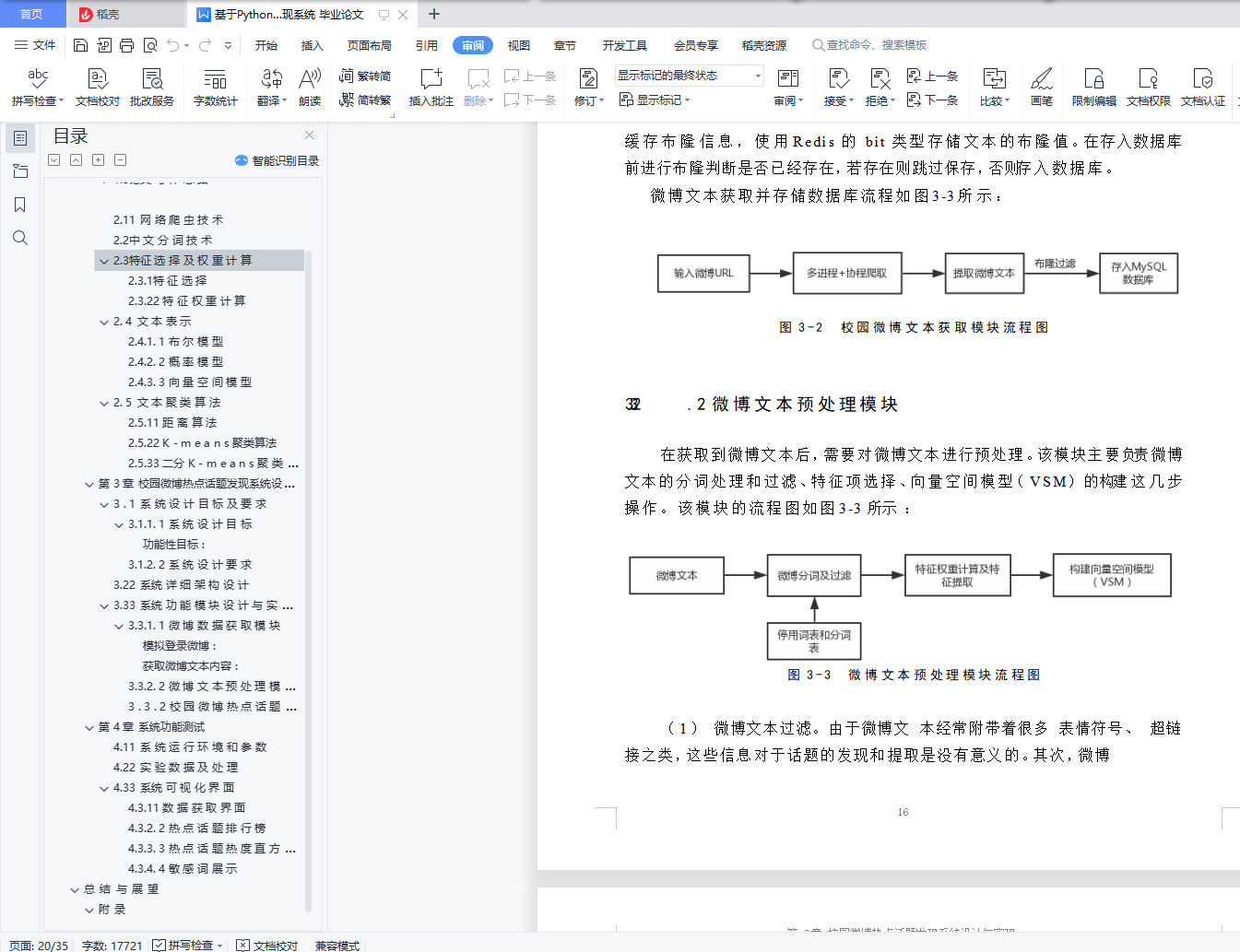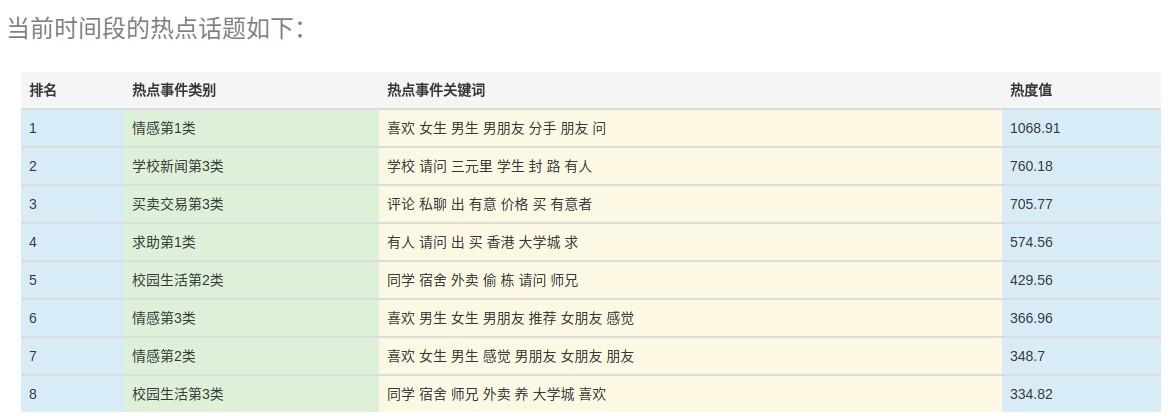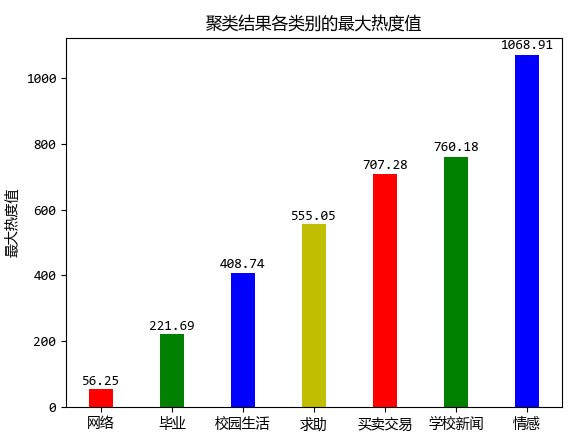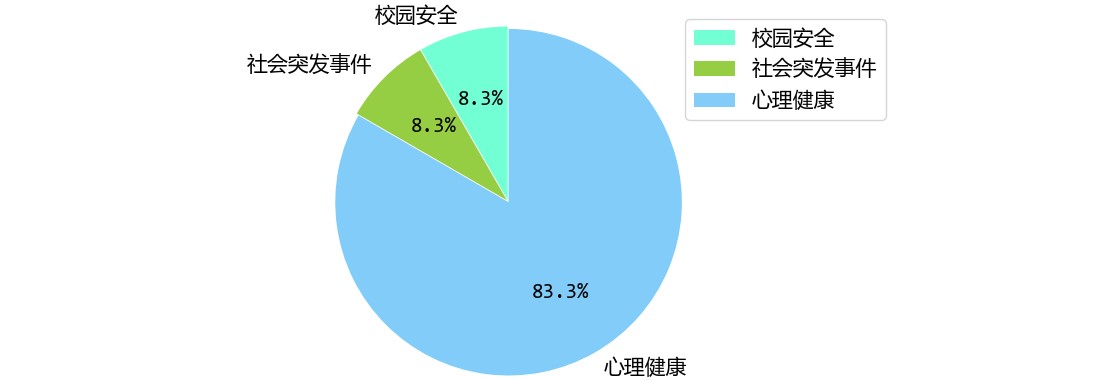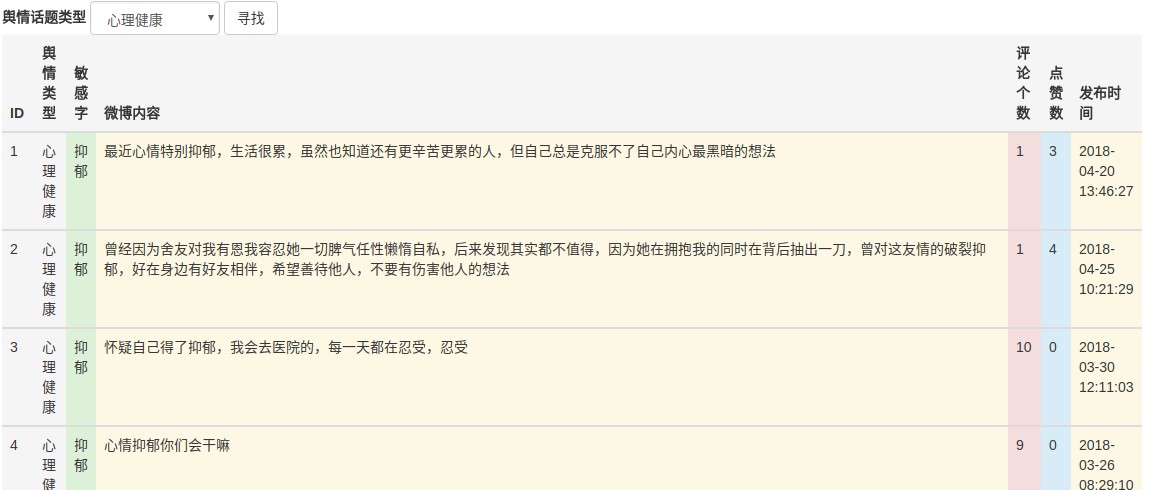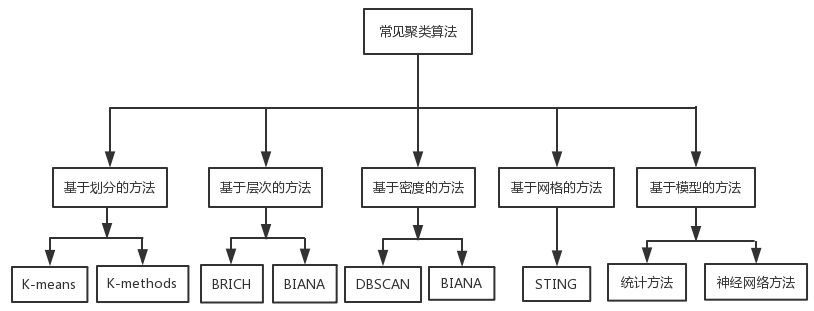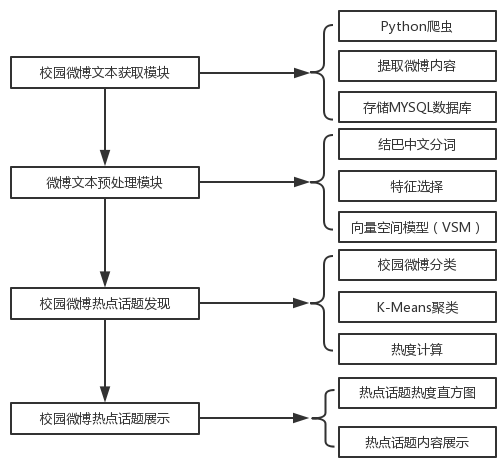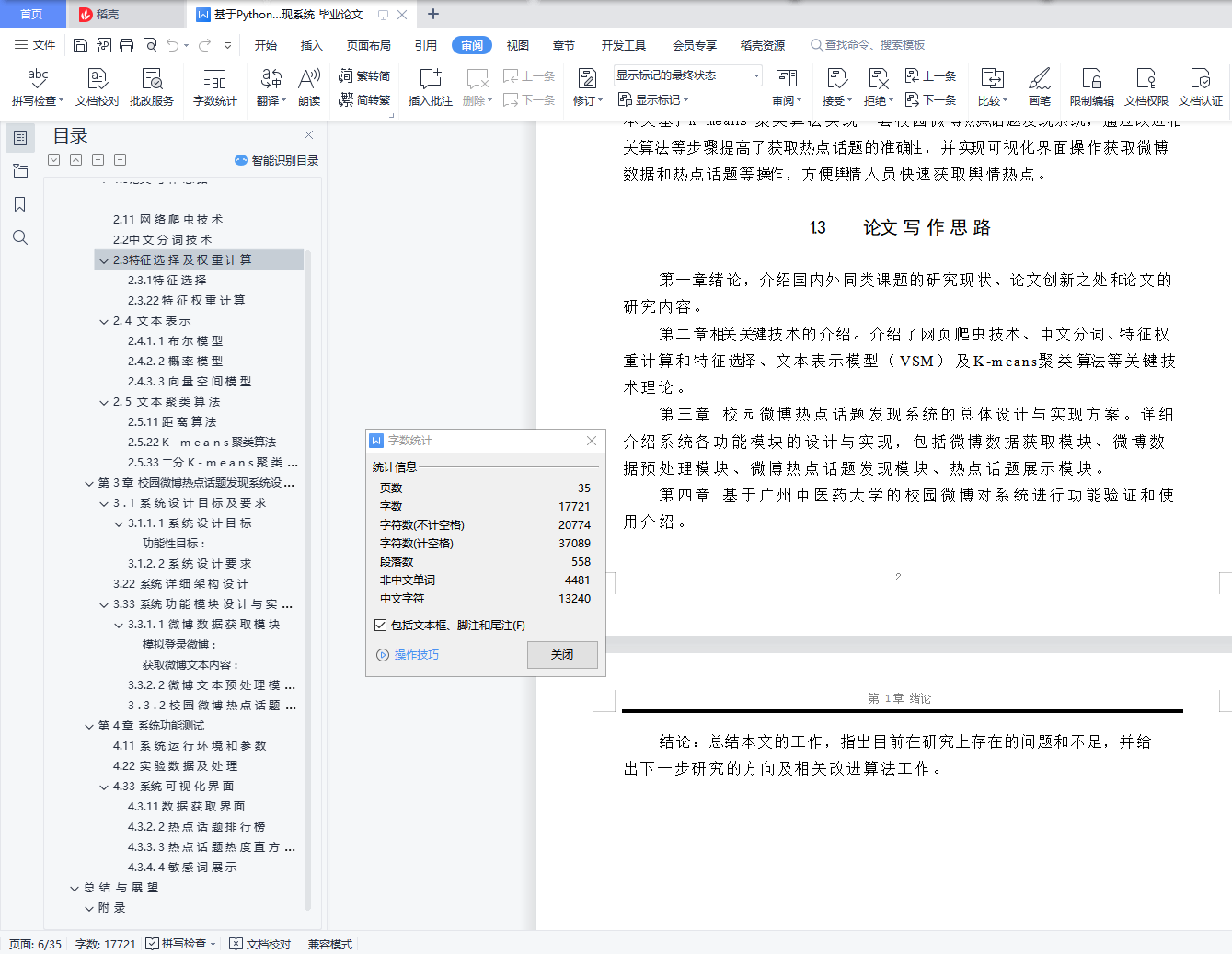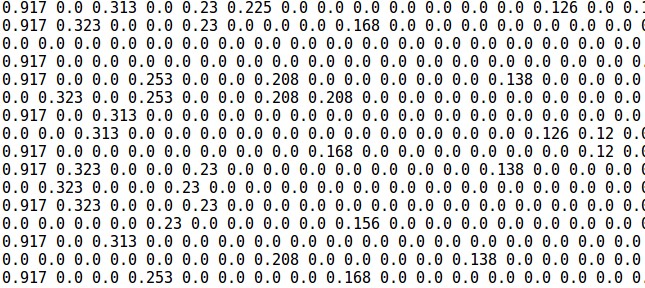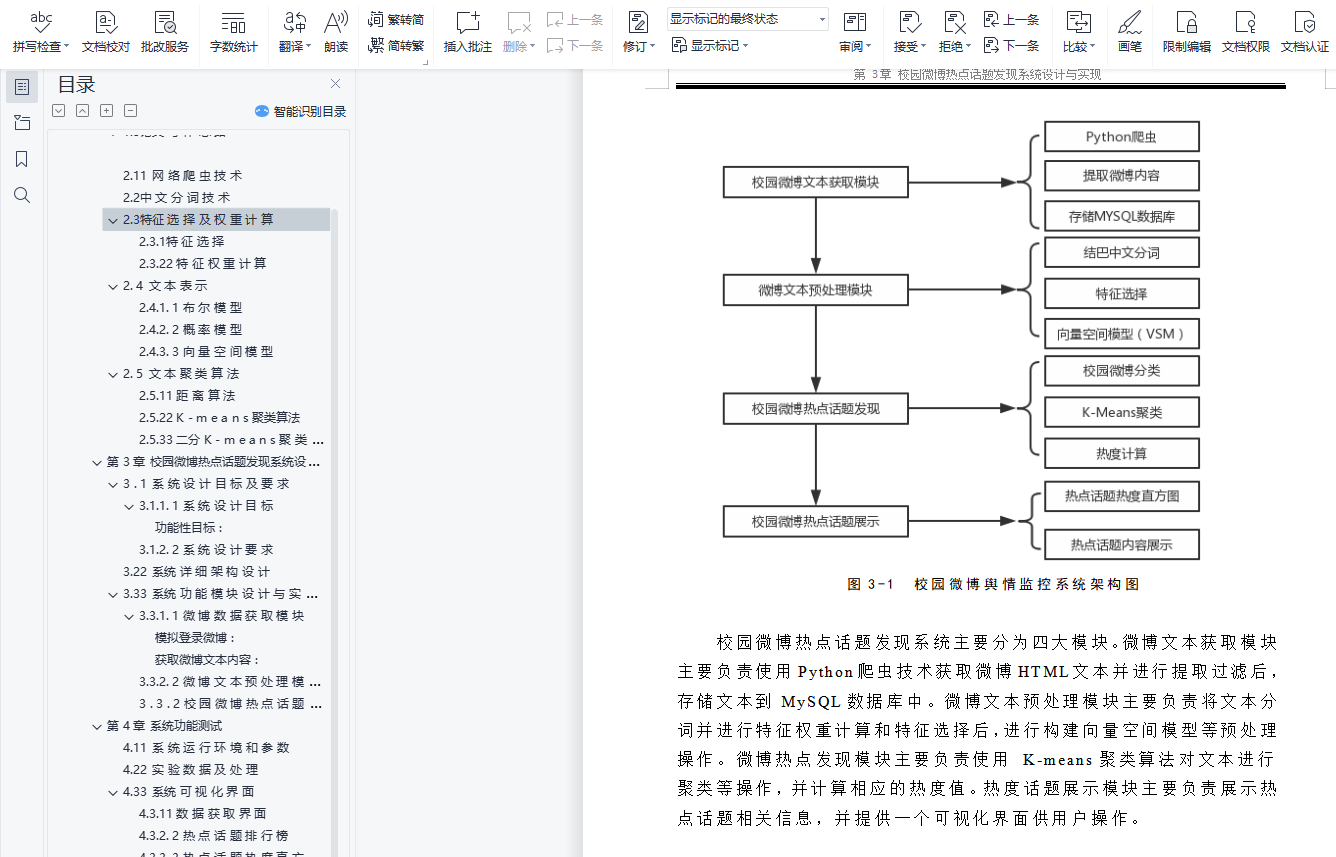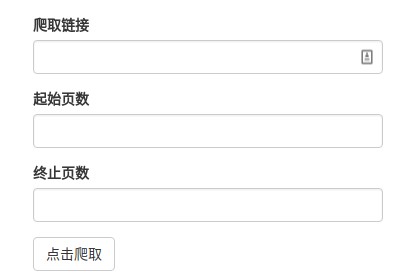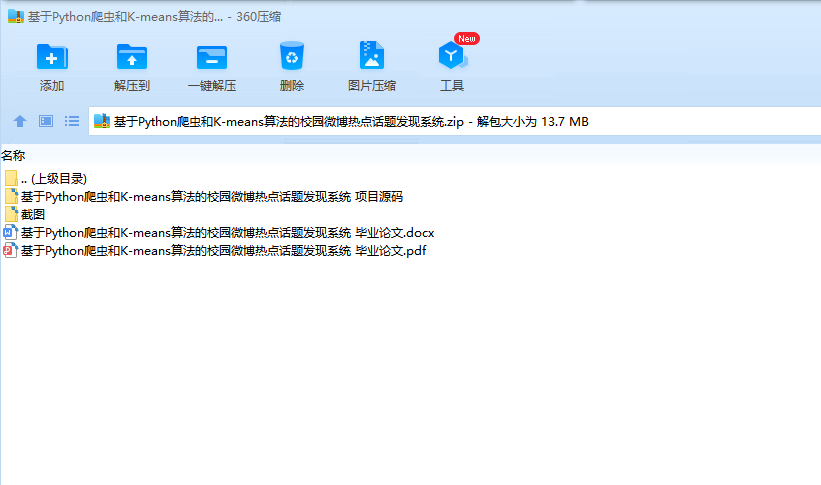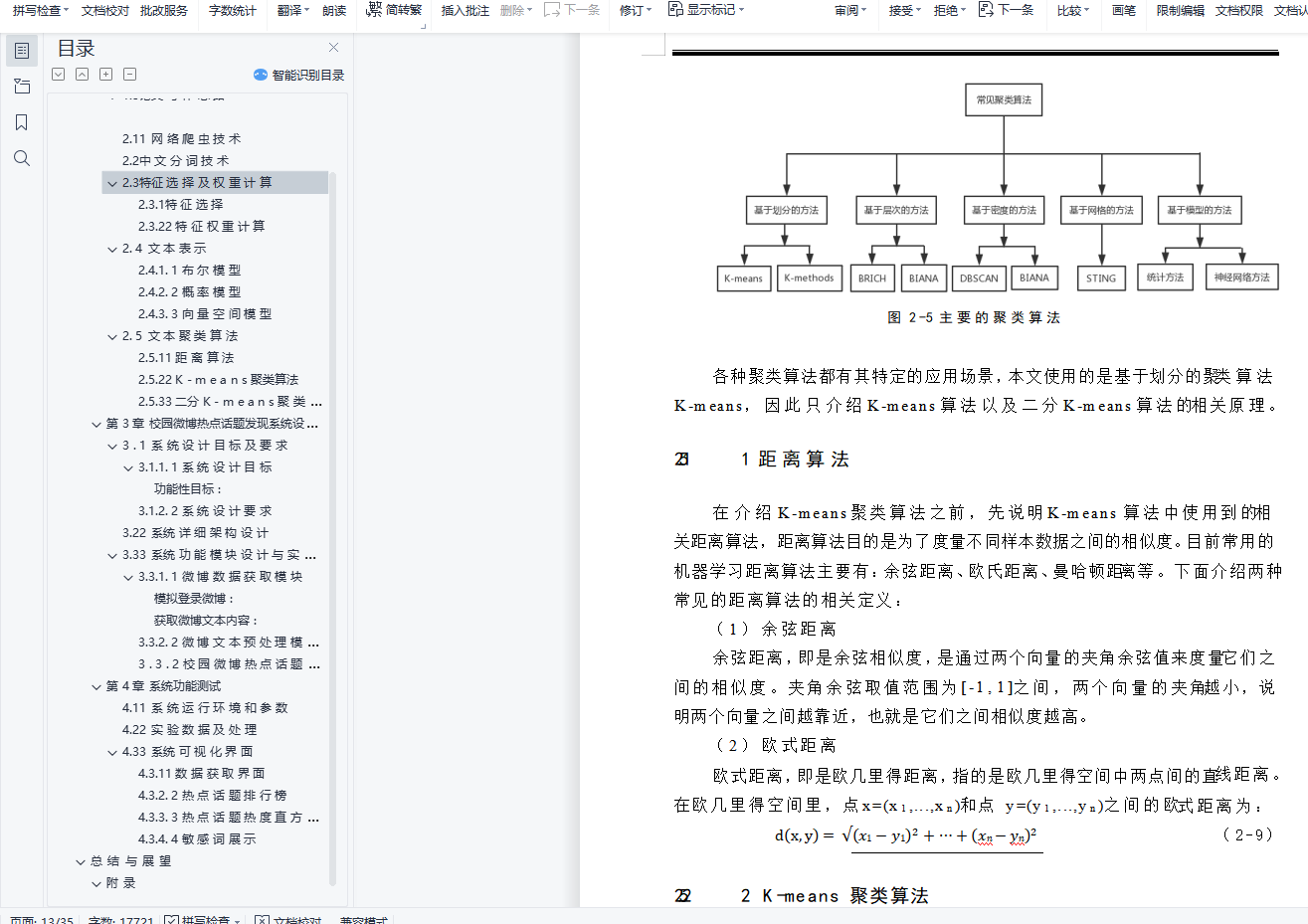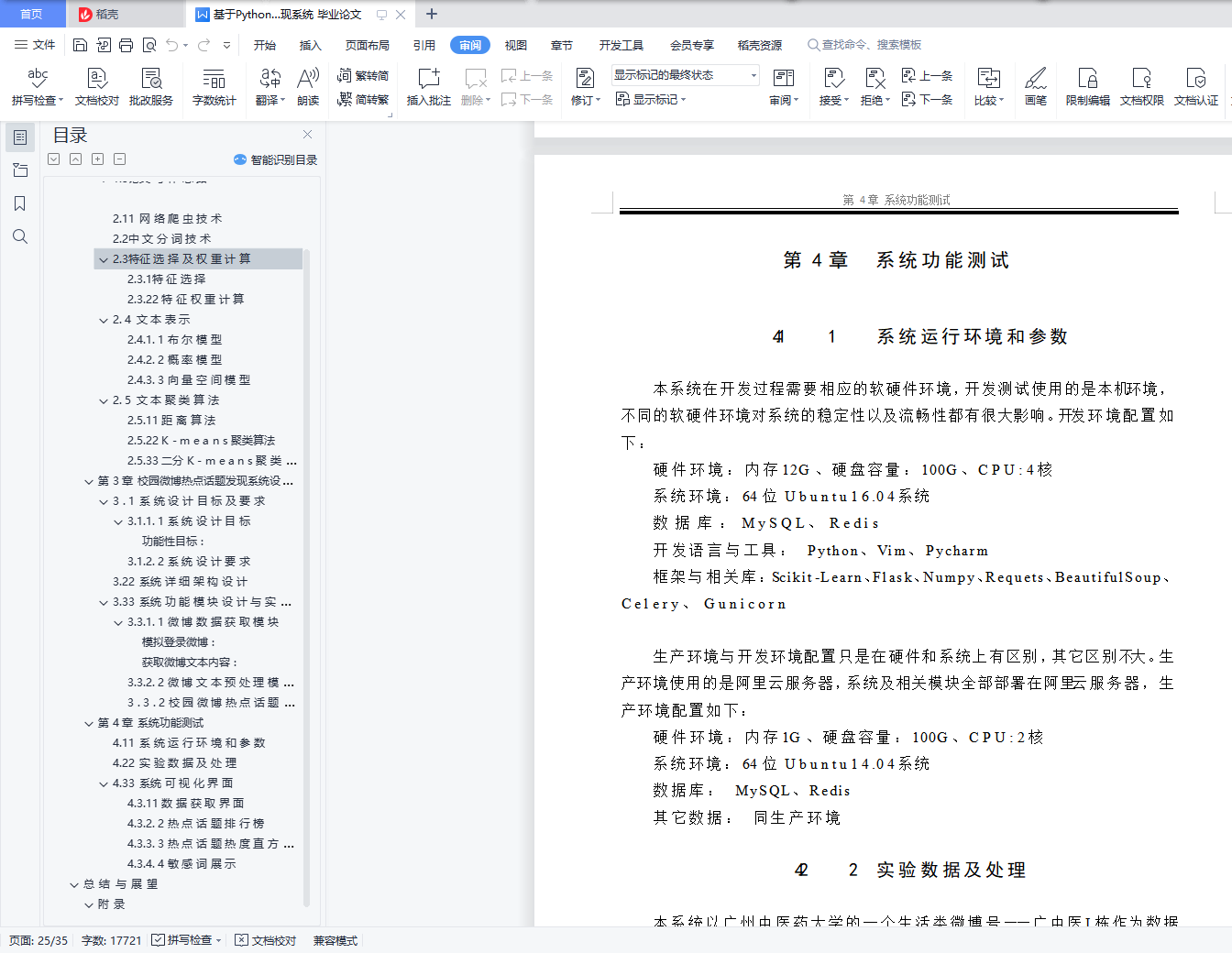摘 要
微 博 由 于 其 “ 短 平 快 ” 的 信 息 生 产 能 力 和 快 速 传 播 能 力 , 已 经 广 泛 流 行 于 高 校 学 生 的 日 常 生 活 中 。但 微 博 上 的 负 面 舆 情信 息 给 社 会 、学 校 和 个 人 带 来 巨 大 的 危 害 。由 于 微 博 的 多 而 快特 点 , 无 法 依 赖 人 工 对 相 关 信 息 进 行 收 集 、筛 选 和 发 掘 热 点 话题 。因 此 研 究 并 开 发 校 园 微 博 热 点 话 题 发 现 系 统 , 对 高 校 舆 情工 作 有 重 要 的 意 义 。
本文从微博独有的短文本特征及国内外相关微博研究 出发 , 通 过 对 校 园 微 博 进 行 分 类 处 理 后 使 用 K - m e a n s 聚 类 算 法 对校 园 微 博 短 文 本 聚 类 , 并 改 进 热 度 计 算 公 式 , 通 过 话 题 热 度 提取 校 园 微 博 热 点 话 题 , 实 现 对 校 园 微 博 热 点 话 题 的 监 控 。本 文通 过 几 个 模 块 设 计 并 实 现 了 校 园 微 博 热 点 话 题 发 现 系 统 , 包 括微 博 数 据 爬 取 模 块 、微 博 数 据 预 处 理 模 块 、微 博 热 点 话 题 分 析模 块 、微 博 热 点 话 题 展 示 模 块 等 模 块 。最 后 以 广 州 中 医 药 大 学的 生 活 类 微 博 — 广中医 I 栋 为 研 究 对 象 , 对 校 园 微 博 各 模 块 功能 及 相 关 技 术 进 行 介 绍 , 并 对 相 关 模 块 进 行 测 试 验 证 , 分 析 校园 微 博 热 点 话 题 特 点 , 总 结 系 统 的 优 点 和 不 足 , 提 出 下 一 步 改进 的 设 想 。
关键词: 校园 微博 K - m e a n s 热 点 话 题
ABSTRACT
ABSTRACT
Because of its "short and fast" information production capability and rapid dissemination capability, MicroBlog has become widely popular in the daily life of college students. However, the negative public sentiment information on microblog has brought great harm to society, schools and individuals. Due to the multiple and fast characteristics of microblog, it is impossible to rely on manual collection of relevant information to screen and explore hot topics. Therefore, researching and developing hotspot discovery system on campus microblogs is of great significance to the public opinion work in colleges and universities.
This article starts with the unique short text feature of microblog and related microblog studies at home and abroad. After classifying campus microblogs, we use K-means clustering algorithm to cluster short texts on campus microblogs and improve heat calculation formulas. Through the hot topic of campus microblog hot topic extraction, to achieve the monitoring of campus microblogging hot topics. This paper designs and implements a campus microblog hot topic discovery system through several modules, including microblog data crawling module, microblog data preprocessing module, microblog hot topic analysis module, and microblog hot topic display module. The University of Medicine's Life Microblog –Guangzhongyi I dong is the subject of the study. It introduces the functions and related technologies of the campus microblog modules, tests and verifies the relevant modules, analyzes the characteristics of the campus microblogging hot topics, and summarizes the advantages and disadvantages of the system. Put forward the idea of further improvement.
Keyword: Campus Micro-Blog K-means Hot topic detection
目 录
摘 要 .................................................... I
ABSTRACT ............................................... III
第 1 章 绪论 .............................................. 1
1.1 国内外研究现状与意义 .............................. 1
1.2 本文创新点 ........................................ 2
1.3 论文写作思路 ...................................... 2
第 2 章 相关技术介绍 ...................................... 5
2.1 网络爬虫技术 ...................................... 5
2.2 中文分词技术 ...................................... 5
2.3 特征选择及权重计算 ................................ 6
2.3.1 特征选择 ..................................... 6
2.3.2 特征权重计算 ................................. 7
2.4 文本表示 .......................................... 8
2.4.1 布尔模型 ..................................... 8
2.4.2 概率模型 ..................................... 9
2.4.3 向量空间模型 ................................. 9
2.5 文本聚类算法 ...................................... 9
2.5.1 距离算法 .................................... 10
2.5.2 K-means 聚类算法 ............................ 10
2.5.3 二分 K-means 聚类算法 ....................... 11
第 3 章 校园微博热点话题发现系统设计与实现 ............... 13
3.1 系统设计目标及要求 ............................... 13
3.1.1 系统设计目标 ................................ 13
3.1.2 系统设计要求 ................................ 14
3.2 系统详细架构设计 ................................. 14
3.3 系统功能模块设计与实现 ........................... 15
3.3.1 微博数据获取模块 ............................ 15
3.3.2 微博文本预处理模块 .......................... 18
3.3.2 校园微博热点话题发现模块 .................... 21
第 4 章 系统功能测试 ..................................... 25
4.1 系统运行环境和参数 ............................... 25
4.2 实验数据及处理 ................................... 25
4.3 系统可视化界面 ................................... 27
4.3.1 数据获取界面 ................................ 27
4.3.2 热点话题排行榜 .............................. 27
4.3.3 热点话题热度直方图 .......................... 28
4.3.4 敏感词展示 .................................. 28
总 结 与 展 望 .......................................... 31
参 考 文 献 ............................................. 33
致 谢 ................................................... 35
附 录 ................................................... 37
